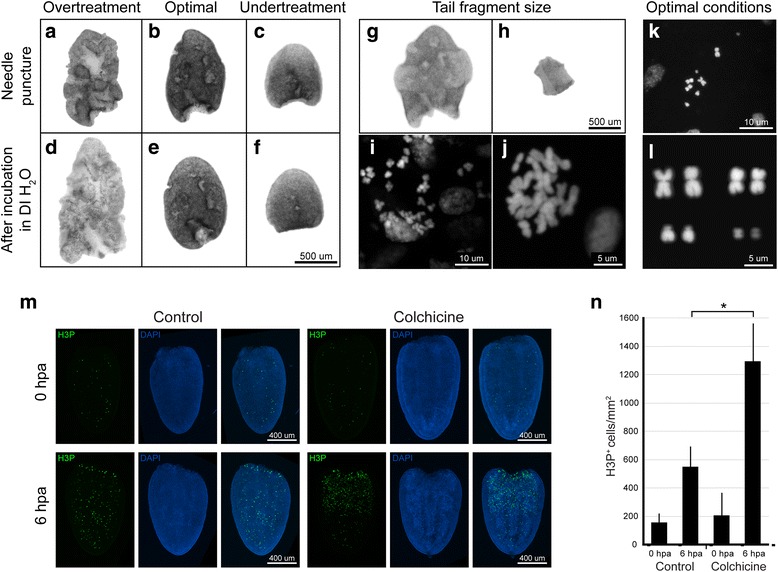Fig. 2.

Protocol optimization in the freshwater planarian S. mediterranea. Conditions critical for optimal chromosome preparation in planarians include extent of needle puncture and colchicine treatment. An excessive number of needle punctures can cause deformation and disaggregation of the tissue, which became too swelled and fragile after incubation in DI H2O (a, d). This led to dispersed chromosomes on the slide without distinguishable cell boundaries (i). An optimal number of needle punctures (4~10 in a 0.5 × 1 mm fragment) facilitated tissue swelling without causing disaggregation in DI H2O (b, e) and maintained tissue integrity after acetic acid treatment (g). This produced optimal spreading of chromosomes on a slide (k, l). An insufficient number of needle punctures did not swell the tissues in DI H2O (c, f), which led to overlapping chromosomes (j). One fourth of a 0.5 × 1 mm fragment (g, h) can produce sufficient optimal chromosome spreads. If too large a fragment is used for squashing, it will also result in crowded chromosomes (j). Colchicine treatment increased the number of mitotic cells by ~ 2.5 times (m, n, *P < 0.0001). Mitotic cells were labeled with anti-H3P Ab (m)
